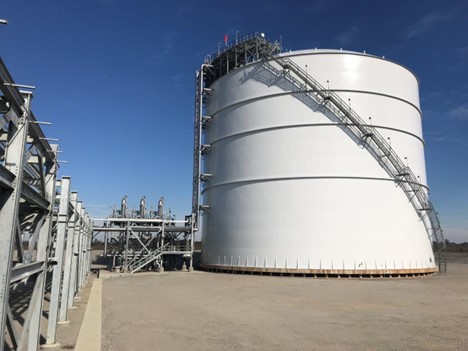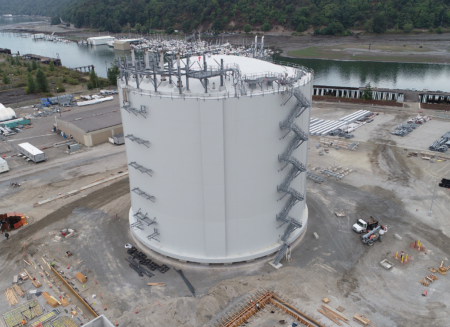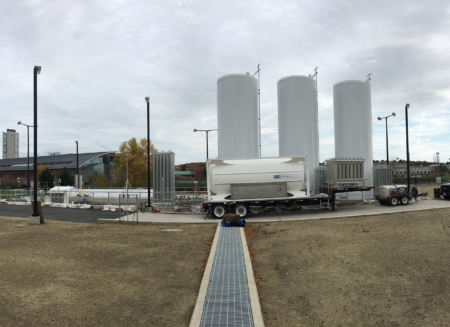To supply their growing customer base with natural gas during peak usage days when extreme low temperatures create a higher-than-normal demand for natural gas, a major US utility constructed a liquefied natural gas (LNG) facility. The facility includes a 1-BCF LNG storage tank, a 10-MMSCFD natural gas liquefier, and an LNG vaporization system.
Key Components:
- Owner's Engineering
- Process, Mechanical, Electrical, and Civil/Structural Design
- Hazard Assessment
- Regulatory Compliance
- Review of Commissioning Plans and Procedures
The utility implemented an Engineer-Procure-Construct (EPC) delivery method for the project, contracting with an EPC firm for design and construction of the facility. They separately engaged Sanborn Head to provide Owner’s Engineering (OE) services throughout the project life-cycle.
As the OE, Sanborn Head’s engineering team worked closely with the utility, providing technical guidance and review during each design phase of the project, including 30%, 60%, 90% and final Issued for Construction (IFC) drawing packages. Sanborn Head’s reviews evaluated:
- Regulatory and code requirements for the proposed designs, including compliance with 49 CFR 193, NFPA 59A, PHMSA requirements, and other industry guidance documents.
- Facility siting and equipment layouts.
- Interaction with major equipment and system vendors.
- Process, mechanical, electrical and civil/structural design.
- Operational and maintenance considerations.
Sanborn Head’s team additionally participated in the project Hazard and Operability (HAZOP) workshop and supported evaluation of resulting project design enhancements. Our engineers performed design reviews and participated in Factory Acceptance Testing for the facility’s new PLC-based control system and HMI interface.
As the project progressed from the design phase through the construction and commissioning phase, Sanborn Head supported the utility by assisting with evaluation of construction related issues and review of commissioning plans and procedures.
The facility was placed into commercial operation in 2021.



